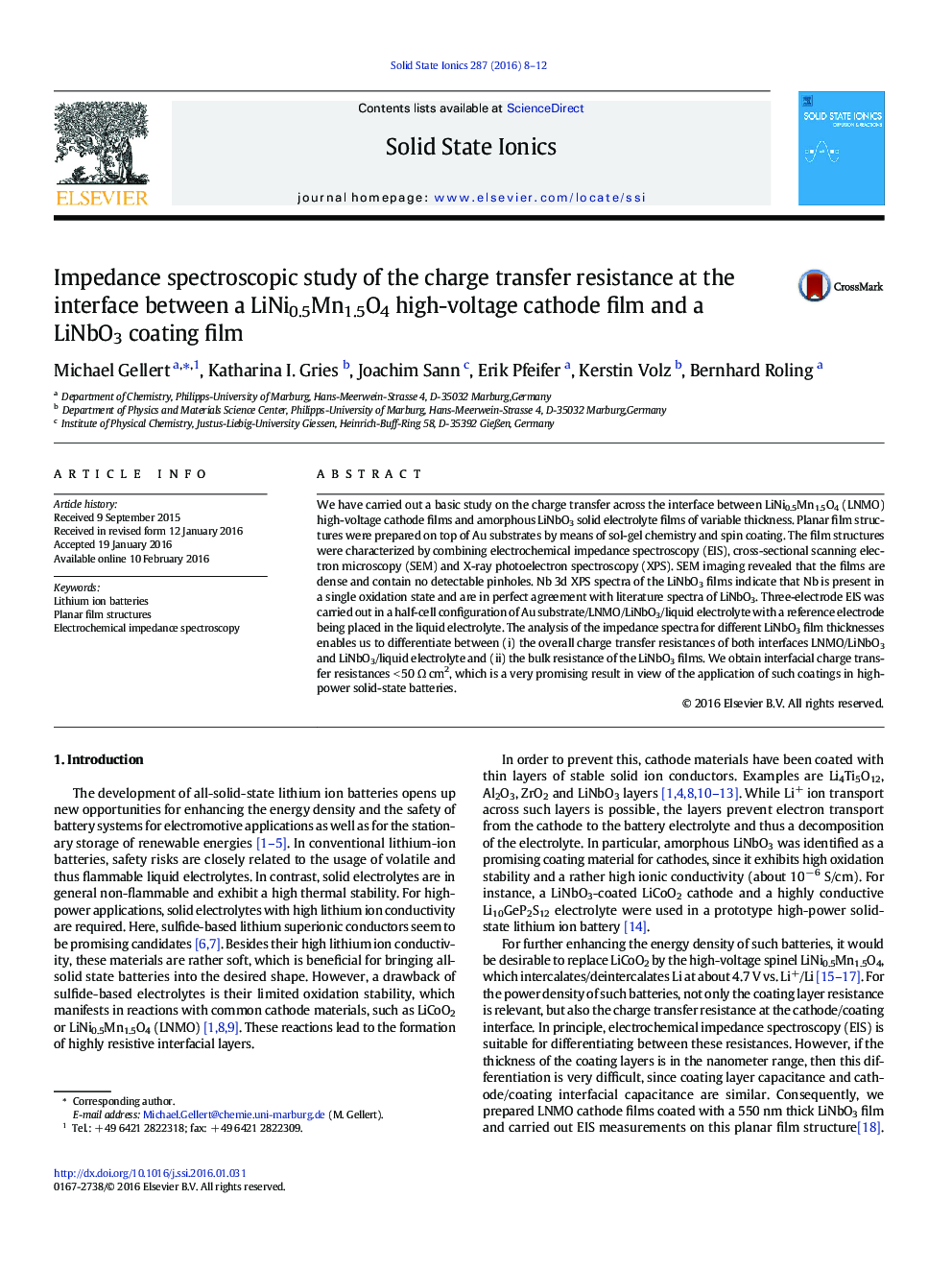| Article ID | Journal | Published Year | Pages | File Type |
|---|---|---|---|---|
| 1293331 | Solid State Ionics | 2016 | 5 Pages |
•Interface of LiNi0.5Mn1.5O4 and LiNbO3 was studied by means of three electrode EIS.•We used sol-gel assisted spin-coating to create a well-defined thin-film structure.•Separation of bulk from interfacial resistances by varying layer thickness.•The LiNi0.5Mn1.5O4/LiNbO3 interface shows very low charge-transfer resistances.
We have carried out a basic study on the charge transfer across the interface between LiNi0.5Mn1.5O4 (LNMO) high-voltage cathode films and amorphous LiNbO3 solid electrolyte films of variable thickness. Planar film structures were prepared on top of Au substrates by means of sol-gel chemistry and spin coating. The film structures were characterized by combining electrochemical impedance spectroscopy (EIS), cross-sectional scanning electron microscopy (SEM) and X-ray photoelectron spectroscopy (XPS). SEM imaging revealed that the films are dense and contain no detectable pinholes. Nb 3d XPS spectra of the LiNbO3 films indicate that Nb is present in a single oxidation state and are in perfect agreement with literature spectra of LiNbO3. Three-electrode EIS was carried out in a half-cell configuration of Au substrate/LNMO/LiNbO3/liquid electrolyte with a reference electrode being placed in the liquid electrolyte. The analysis of the impedance spectra for different LiNbO3 film thicknesses enables us to differentiate between (i) the overall charge transfer resistances of both interfaces LNMO/LiNbO3 and LiNbO3/liquid electrolyte and (ii) the bulk resistance of the LiNbO3 films. We obtain interfacial charge transfer resistances < 50 Ω cm2, which is a very promising result in view of the application of such coatings in high-power solid-state batteries.
Graphical abstractFigure optionsDownload full-size imageDownload as PowerPoint slide
